Combat aircraft. Horror flying ... No, just horror
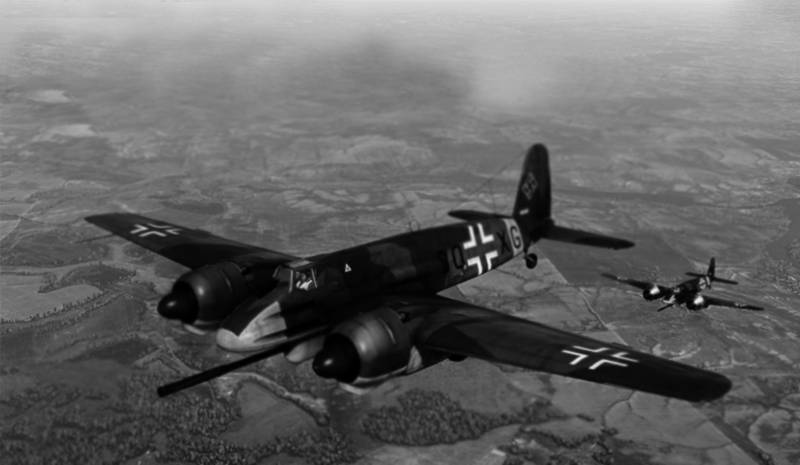
Already once on our pages this plane was considered and there was even an article-reaction. But there it was about a few different things. Hs. 129 and IL-2 were compared, from LTH to the number of produced and used. My opponent argued that the German attack aircraft was almost a miracle of technology, which through careless stupidity did not turn the tide of the war, and stuff like that.
In general, I try to approach the assessment of aircraft with maximum objectivity. Although sometimes it does not coincide with the general opinion, as, for example, when a flying plywood coffin that killed a huge number of pilots, for some reason, most people consider one of the best aircraft of the Second World War.
If anyone is not in the know, we are not talking about the Po-2, but about the A6M2. The plane that lost the war in the air to Japan.
But in the case of "Henschel" everything is very clear, and no matter how I single out the German planes (those that are worth it), but this monster deserves praise, if it deserves, then in the opposite form. But more on that at the very end.
In general, the company "Henschel and Sons" lived and quietly produced steam locomotives, which were known throughout Europe. They did not disdain the construction of trucks and buses. Why not?
During the First World War, the company produced artillery and Tanks.
Aviation part of the concern is associated with the name of Oskar Henschel, the son of one of the founders of the company (Karl and Werner Henscheli), who thought about two things at once: the construction of aircraft and friendship with the authorities in a political sense.
It was Oskar Henschel who proved that investing money in a promising industry can give orders, and financial friendship with those who will determine the country's policy can bring profit.
And so it happened. The year 1933 was marked by several events, seemingly unrelated to each other, but ... Hitler came to power and sent the Versailles Accords, as they would say now, to Minsk. The entire war industry in Germany began to grow rapidly.
At the same time, construction began on the huge plant of the Henschel Flyugzeugwerk GmbH, which was registered in the same year of 1933.
And the orders went. Firm "Henschel" quickly mastered the licensed production of "Junkers" Ju.86 "to maintain the pants" and immediately began to develop its own aircraft. And at the same time money went to the party cashier of the NSDAP.
The first swallow was the Hs. 123, a light attack aircraft. Turned out to be a very successful machine, this biplane performed well in battles in Spain, was bought by several countries and even held out until the end of World War II as a strike aircraft.
But the armament Hs. 123 (2 machine guns of rifle caliber) and 50-kg bombs (up to 4 pieces) were ineffective against armored targets, and the suspension of the container with two MG-FF cannons reduced the already low speed of the biplane.
The bombs, of course, disabled the equipment, but they had to be delivered before it. The Hs. 123 was a very strong airplane, but in the realities of World War II, small-caliber anti-aircraft artillery left little chance for it. Yes, and the fire of an ordinary rifle weapons was very effective against the attack aircraft, since the 123rd did not carry armor.
That is why the decision is ripe to create a new type of aircraft: an armored attack aircraft capable of operating at the front edge of the battlefield against armored vehicles.
In 1937, the technical department of the German Air Ministry issued a concept for such an aircraft, which was called the "battlefield strike aircraft." And a competition was announced, the conditions of which were received by several firms: Blom and Foss, Focke-Wulf, Gotha and Henschel.
It was supposed to be an armored twin-engine aircraft with a set of weapons that would allow them to hit armored vehicles.
"Gotha" refused to participate, "Blom and Foss" went too far with originality with the project of an asymmetric aircraft (in addition, their aircraft was single-engine), and therefore their project was rejected. The Focke-Wulfs did not strain, but took their FW.189 and replaced the luxurious reconnaissance cabin with an armored capsule with a pilot and gunner. The concept of protection against attacks from behind will prove to be absolutely correct in the future.
But the project was accepted from Henschel. And here, probably, the point is not in the behind-the-scenes maneuvers, but in the fact that the Hs.129 project most corresponded to the stated requirements. On the paper.
The chief aircraft designer of the Henschel, Friedrich Nikolaus, did not create anything masterpiece: an ordinary, one might say, classic monoplane with two motors on the wings and the cockpit shifted as much as possible to the nose.
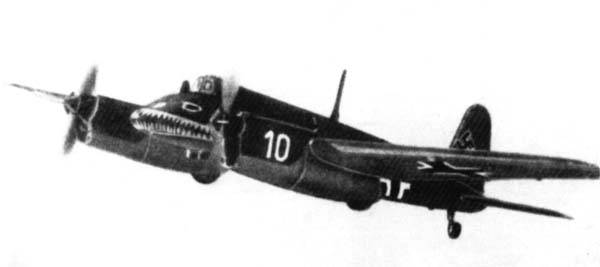
The innovations were inside. And the test pilots did not like them at all. Not every pilot could sit in the cockpit of the Hs. 129 at all, because Nikolaus reduced the size of the armored cabin as much as possible to facilitate the design. Yes, the booking area was reduced, the weight did not go beyond the calculated ones, but ... the cockpit width at the level of the pilot's shoulders was 60 centimeters.
But that was only the beginning!
Such a tiny cabin didn’t allow ... anything! And just amazing innovations began.
1. Instead of a normal control knob, they installed ... now THIS would be called a "multifunction joystick". German pilots called the control body "penis", naturally, in the army's interpretation.
The joystick turned out to be short, uncomfortable and had to be put into quite a lot of effort.
2. A full-fledged dashboard did not fit into the cockpit. Therefore, instruments that control the operation of the engines (oil pressure and temperature, coolant temperature, fuel level indicators, etc.) were placed outside the cab, on the nacelles.
In general, this turned out to be a unique case in the world aircraft industry, no one else was ever perverted.
3. Collimator sight. He also did not fit, because the pilot was aiming through the bulletproof glass. The sight was installed outside the cockpit in a special armored casing.
However, how spacious the Hs. 129 was in the cockpit can be judged from the photo. Not the most spacious Bf 109 and I-16.
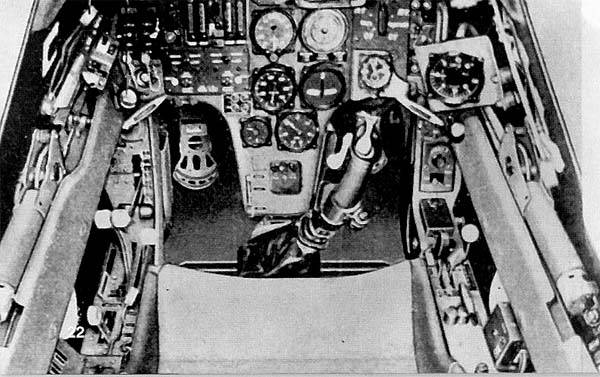
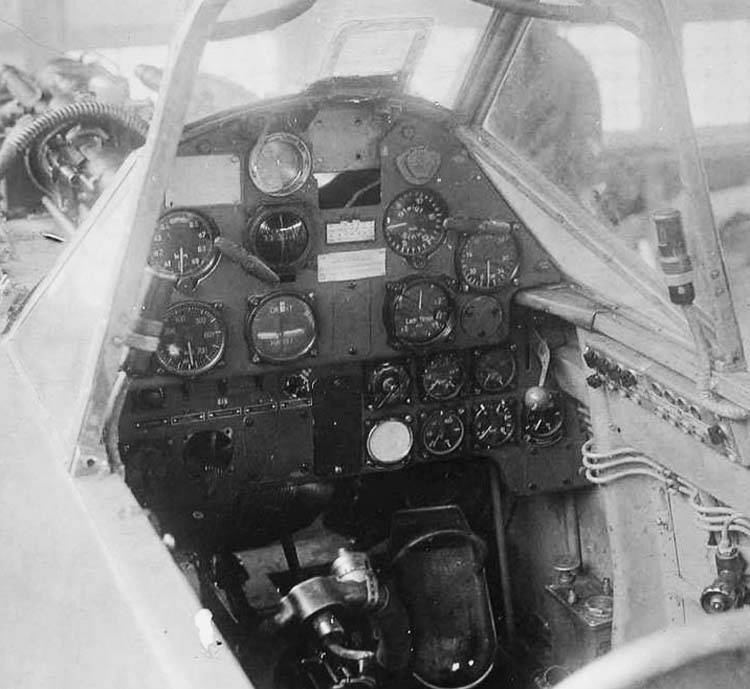
But to all the testers' claims, Chief Designer Nikolaus responded in the style that an attack aircraft is not a bomber, and therefore long-range flights are not his element. And 30-40 minutes can be tolerated in the name of safety.
But, in addition to the tightness, the pilots complained about very difficult control and disgusting side visibility. There was simply no back review as such. So the question arose: which is better, to be alive, but tired, or to die without a sweat?
But how to do it, given that the pilot practically did not control the situation on the side and behind his plane?
The heavy handling resulted in the Hs. 129 being unable to dive. At an angle of descent of more than 30 degrees, the efforts on the control stick during withdrawal became so large that they simply did not allow the aircraft to be taken out of the dive. The dive experiments ended in tragedy when a test pilot in January 1940 was unable to take the plane out of its dive precisely because he simply did not have enough strength. The plane crashed, the pilot was killed.
Things like a long take-off run and low rate of climb don't seem like a big deal compared to the above. And the cherry on top was that the twin-engined Hs. 129 couldn't fly on one engine if needed.
However, it should be noted that the competitor from Focke-Wulf flew even worse.
So a very, very strange plane went into production. True, only in a test series of 12 vehicles. It is difficult to say how the fate of the aircraft could have developed, in fact, Germany was preparing for tank battles against France and Britain, and there, according to generals from the OKW, an anti-tank attack aircraft would be very useful.
But it so happened that Hs. 129 did not have time to go to war. More precisely, France surrendered, and Britain fled across the English Channel very quickly. So in "Henschel" they received an order to bring the plane to mind, improving both the flight characteristics and the working conditions of the pilot.
This, by the way, to some extent happened thanks to all the same French. In the warehouses were seized in very decent quantities Gnome-Ron 14M engines with a capacity of 700 hp. On the one hand, the increase in power came in handy, on the other hand, the entire layout of the machine had to be redesigned for these engines, since the 14M turned out to be much heavier than the original Argus As410 with a capacity of 460 hp.
But still 1400 hp. - this is much nicer than 920, and therefore the performance characteristics immediately grew. The speed increased slightly, the takeoff run was reduced, and the attack aircraft began to gain altitude faster. And finally, there was an opportunity to somehow fly on one motor.
But the "Gnome-Rones" turned out to be much more gentle and capricious than the "Argus". But more on that below.
But the pilot had to spit. Naturally, because if you expand the cockpit, this is a rework of the entire fuselage. And nobody wanted to do such cardinal modifications of the structure at Henschel. We limited ourselves to increasing the glazing of the lantern and replacing two bulletproof glasses of the frontal part with one transparent armor plate.
The armament also underwent some changes: the MG-FF, which were very old, were replaced with more promising MG.151 / 20.
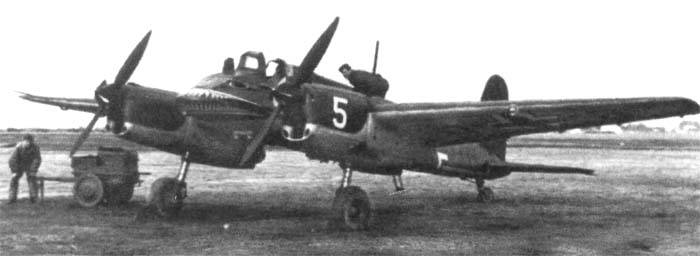
In this form, the plane went to war. And the war in the East immediately showed another interesting thing: the number of armored vehicles in the Red Army was somewhat different from the data provided by German intelligence. There were much more tanks, so the anti-tank attack aircraft became relevant again. And the order was given to build the plane as quickly as possible. Until the end of 1941, 219 attack aircraft were built.
There was a problem with weapons. The initial set of two 7,92mm machine guns and two 20mm cannons of poor quality was frankly weak. I will emphasize that it was about work on armored vehicles, but here the rifle-caliber machine gun was already about nothing. Replacing MG-FF with MG.151 / 20 was a perfectly reasonable decision, but it did not solve the problem.
Naturally, the jack-of-all-trades tried to strengthen the attack aircraft's armament with the help of field kits, the so-called "Rustzats".
R1 - two underwing pylons ETC 50 for 50-kg high-explosive bombs or AB 24 containers, each containing 24 anti-personnel bombs weighing 2 kg.
R2 is an under-fuselage container with a 30-mm MK.101 anti-tank gun and 30 rounds of ammunition. R2 could be used simultaneously with R1. In 1943, instead of MK.101, MK.103 began to be installed with an ammunition load of 100 shells.
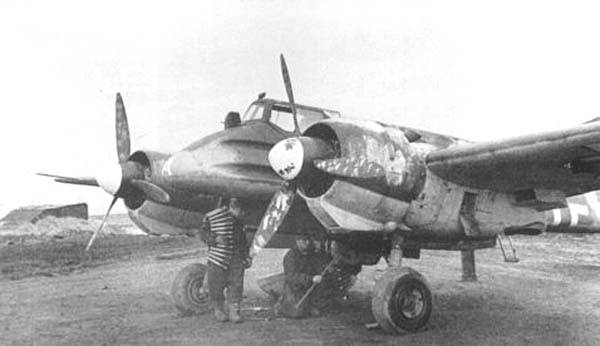
From about the summer of 1943, instead of MK 101, they began to install a new 30-mm MK 103 cannon with an ammunition capacity of 100 rounds. Sometimes it was installed without a cowl-fairing.
R3 - ventral mount of four MG.17 machine guns with 500 rounds of ammunition per barrel. It could also be installed in conjunction with the R1.
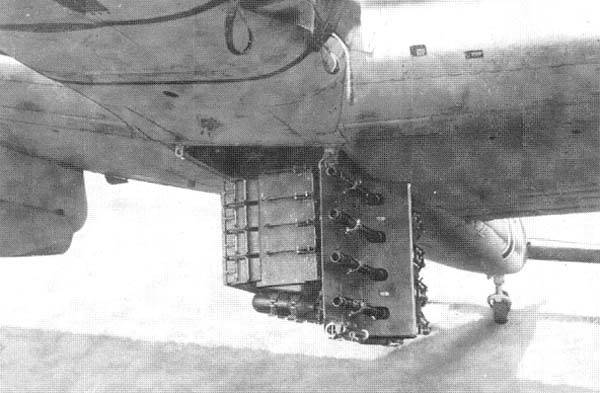
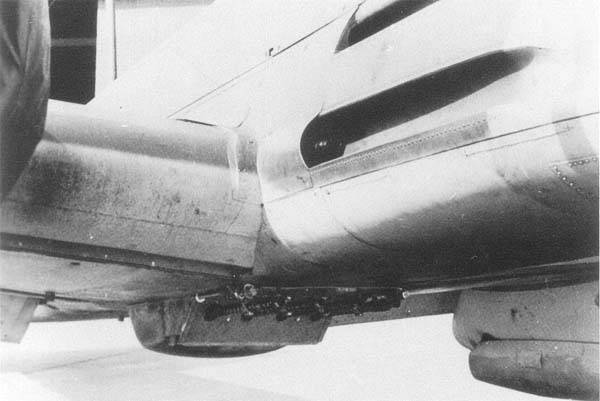
R-3 / B-2 - ventral pod with a 37-mm VK.3,7 cannon and 12 rounds of ammunition.
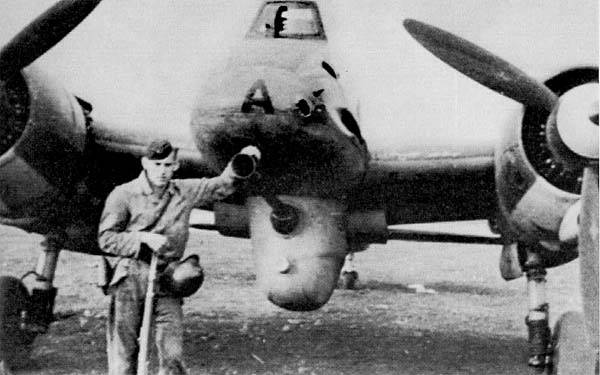
R4 - four pylons ETC 50 under the fuselage. Used in conjunction with R1.
R5 - installation of an Rb 20/30 or Rb50 / 30 aerial camera inside the fuselage by reducing the ammunition load. Instead of an attack aircraft, it turned out to be a scout.
It is understood that some kits (R-3) were anachronistic. It is clear that without the R-1 and R-4, the aircraft was generally ineffective, since 20-mm shells were not at all effective against the armor of modern tanks (except for light ones).
So, without the pylons on which containers with cannons or bombs hung, the effectiveness of Hs. 129 is not worth talking about. It is worth emphasizing here that the aircraft was originally considered as an anti-tank attack aircraft.
The baptism of fire Hs. 129 was accepted in June 1942 near Kharkov. It is difficult to say how successful it was, but in conditions of encirclement and complete demoralization, the Red Army units simply could not resist. Therefore, operating in conditions of complete air superiority, the Henschel pilots reported on 23 destroyed tanks.
There is no data loss, but the fact that there was is a fact. If not combat (although what is there, if the 5-mm engine hood was normally pierced by a bullet from a rifle or DP), then the technical plan. The Gnome-Ron turned out to be complete junk, very sensitive to dust.
Today at stories many considerations about the fact that it was the long arms of the French Resistance who spoiled the engines. Doubtful and unsubstantiated, the engineering services of the Germans, I am sure, were able to determine that this was a factory defect or a real sabotage.
But history has preserved more than enough complaints and requests to send dust filters.
As for criticism and complaints, ordinary Luftwaffe pilots were amazed by the fact that the new aircraft seemed to fly faster than the Ju.87, but not much. Well, the fact that "Stuka" in terms of maneuverability looked like a fighter against the background of a twin-engine armored car. it was already quite amazing.
Hs. 129 could operate only under conditions of complete domination of the Luftwaffe in the sky, this is a fact. How about combat victories? .. Well, the pilots regularly reported on them. How plausible all this is, I cannot judge.
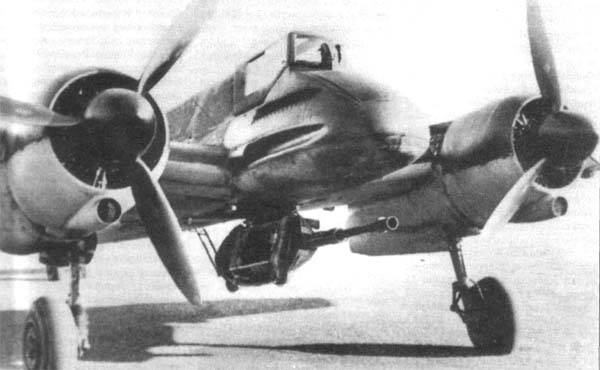
One of the anti-tank squadrons under the command of Chief Lieutenant Eggers as part of the 51st Fighter Squadron "Mölders" made 1942 sorties in a month in 78 and reported the destruction of 29 tanks. In general, I think they were counted, because the figure was so-so. Believe it or not, since artillery and tanks destroyed many times more.
In 1943, it nevertheless became clear that the MK.101 suspended cannon was not good for anything. According to some sources, "it stopped penetrating the armor of the T-34 and KV." An interesting curtsy, it turns out, in 1942 she easily punched, and in 1943 she suddenly stopped.
But the most interesting thing is that it was replaced with the MK.103, which fired the SAME shell, the same weight as the MK.101. But it was twice as fast, 420 rounds per minute against 240. Yes, the ammunition load was increased to 100 rounds, so that now it was possible to fire more times, with the same success.
Yes, a higher rate of fire theoretically provided more hits. But if the shell does not penetrate, what is the point? No. Yes, light tanks, armored vehicles and other equipment - for them the MK.103 was a danger. But normal tanks ... Considering how many light T-60 and T-70 we had in comparison with the T-34 ...
There was another option: to use anti-tank cumulative bombs SD4. But due to the small number of them on board, since one bomb weighed 4 kg, the effectiveness of the Hs-129B sorties was small. The cassette made it possible to dump all the bombs on one target, so yes, if you aim well, the tank was hit by 100%. But if not ... The area of the cluster bombs was only 50 square meters. m.
The maximum inflicted (according to German data) damage from the use of Hs. 129 occurred on July 8, 1943 at the Kursk Bulge. Then, on the march, a column of Soviet equipment was attacked, and, taking advantage of the fact that there was no anti-aircraft cover, the Henscheli, under the cover of the Focke-Wolf, hit about 80 targets.
I cannot judge how accurate the figures given by the Germans are, but they are supported by the information that the counter-attack on the flank of the 2nd SS Panzer Corps did not take place.
But this did not have any significant effect on the general course of the battle on the Kursk Bulge. In total, 6 anti-tank squadrons of Hs. 129 fought on the Eastern Front, that is, the total number did not exceed 60 aircraft.
A drop in the sea.
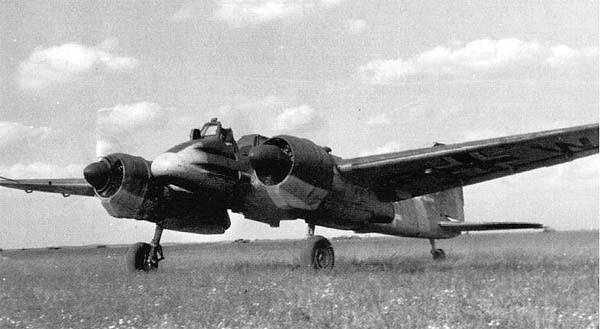
Soviet pilots appreciated the Hs. 129, and you can even say that they liked it. Indeed, slow, clumsy, half-blind in terms of the "back-sideways" view - why not a target?
The Henschel could not escape due to the speed, the armor did not protect against the shells of the Soviet air cannons, there was no way to defend against attacks from behind. Even the Stuka, with its only MG.15, had a chance to fight back. Henschel did not have it initially.
In 1943 we published an interesting textbook: "Tactics of Fighter Aviation", for cadets of flight schools. It described all types of aircraft in Germany, indicating how it is easier and safer to disable them. Some aircraft such as Messerschmitt Bf.109 or Focke-Wulf FW.190 were given entire chapters, but the Hs.129 was awarded one page.
After a brief technical description and armor protection scheme, it was concluded that the aircraft can be attacked with impunity from any direction, except for a head-on attack. As a combat aircraft, the Henschel was not taken seriously, and this was entirely justified.
Even Rudel's Thing with two 37mm cannons was more dangerous for tanks, because this plane could dive to the rear of the tank, and since the Ju.87 was more obedient in control, it was easier to aim at the target.
So the pilots of the Hs. 129 continued to send reports about the destroyed Soviet tanks, but they were no longer taken seriously due to their small numbers and lack of evidence.
There have been attempts to improve this aircraft again. But there, at the end of the war, a completely unscientific fantasy such as a flamethrower and 300 liters of mixture in a suspended container, W.Gr.21 and W.Gr.28 unguided rockets of 210 and 280 mm calibers had already gone into action. All this luxury was tested, but was not allowed to use.
But the Forsterzond project looked especially cool, a kind of “Shrage Music” on the contrary: six barrels of 77 mm caliber were installed behind the gas tank in the fuselage and directed back and down at an angle of 15 degrees to the vertical. A sub-caliber 45-mm shell was inserted into each barrel.
The system was powered by a magnetic detector that reacted to large metal objects. The detector antenna was located in the forward fuselage. It was all supposed to work like this: when the plane flew over the tank, the detector caught the accumulation of metal and automatically fired a shot. The project did not go into production, perhaps because the detector did not know how to distinguish its tank from the enemy.
A hanging container with a 37-mm VK 3,7 cannon and 12 rounds of ammunition looked more or less human. The MG.151 guns in this case were dismantled, which cannot be called a good option, since in the event of any complication of the situation, all the pilot could count on was two machine guns of a rifle caliber.
Piloting the Hs. 129 with this gun became even more difficult, and there was no question of aiming accurately. Only the first shot could be aimed. Theoretically, the VK 3,7 could penetrate the 52-mm armor of the T-34 turret with a subcaliber projectile, but only when firing from a distance of no more than 300 m, and the 40-mm side armor from 600 m.However, the effective firing time was 2,8 seconds. when shooting at the tower and 7 seconds when shooting at the side. That is, it was really possible to hit the tower with one shell, and three on the side. If - I repeat - to aim on a dive while driving a very poorly adapted machine.
In 1944, the last attempt was made to make the Hs. 129 an attack aircraft. The Hs-129B-3 / Wa was approved for testing, armed with a 75-mm VK 7.5 anti-tank gun (ammunition for 12 rounds in a drum magazine).
The MG151 / 20 cannons in this version were also removed, while the MG.17 machine guns remained and were used for zeroing. In general, something quite wonderful came out. Yes, VK 7.5 hit any Soviet tank, but at what cost!
This monster was made on the basis of the Rak.40 anti-tank gun. The test results showed that Hs.129 is capable of inflicting damage (often fatal) to a tank from a distance of 800 meters, but ... If it hits.
VK 7.5 shells pierced even the IS-2 turrets, delighting everyone. However, the plane flew with this cannon, the weight of which was approaching half a ton with great difficulty. 250 km / h is all that could be squeezed out of an airplane. The fairing of the cannon still created a lot of resistance, the barrel of the cannon was below the axis passing through the center of gravity, and each shot strongly rocked the plane, threatening to throw the car into a dive.
Nevertheless, it was decided to produce this aircraft Hs. 129В-3. He even got his own name - "Can opener". They collected about 25 copies and tried to fight on them. Since the Germans did not voice any laudatory odes, and they knew how to boast, it means that there was nothing to brag about.
Nevertheless, Hs.129В-3 were delivered to the Eastern Front, and one even became a trophy of the Red Army.
And then the implementation of the fighter building program began, and the production of the Hs. 129 was discontinued. The overall result of serial production was 871 copies, of which 859 Hs-129B.
Despite a small series, he fought Hs. 129 on all fronts, even in Africa. But it did not work out at all, the African sand corroded the engines even faster than the Russian dust, even the filters did not save. Therefore, our pilots at Stalingrad were surprised to see Hs. 129 in a yellow sandy color.
We flew the Hs. 129, besides the Germans, also the Romanians. But they used the cars as light bombers without using outboard kits.
There was an incident with the Romanians. In 1944, when Romania turned against a former ally of Germany, there were still two dozen Hs. 129 left in the Air Force, which were sent to fight against the Germans, painting yellow crosses with tricolor circles.
Not saved. Since "own" Hs.129 fought on this sector of the front, the Romanians got it from everyone. Our anti-aircraft gunners did not always look at the identification marks, and fired at the familiar silhouettes of Hs.129, so to speak, "from old memory." So 3 planes were shot down. The Germans and our fighters easily shot down the “new Romanians”.
The last Hs. 129 was shot down on April 16, 1945. The German "Henschels" definitely did not fly due to lack of fuel, but the Romanians made their last combat mission on May 11, 1945, striking the traitor Vlasov's army that was making its way to the West.
That's all, the service of the most unsuccessful German aircraft is over.
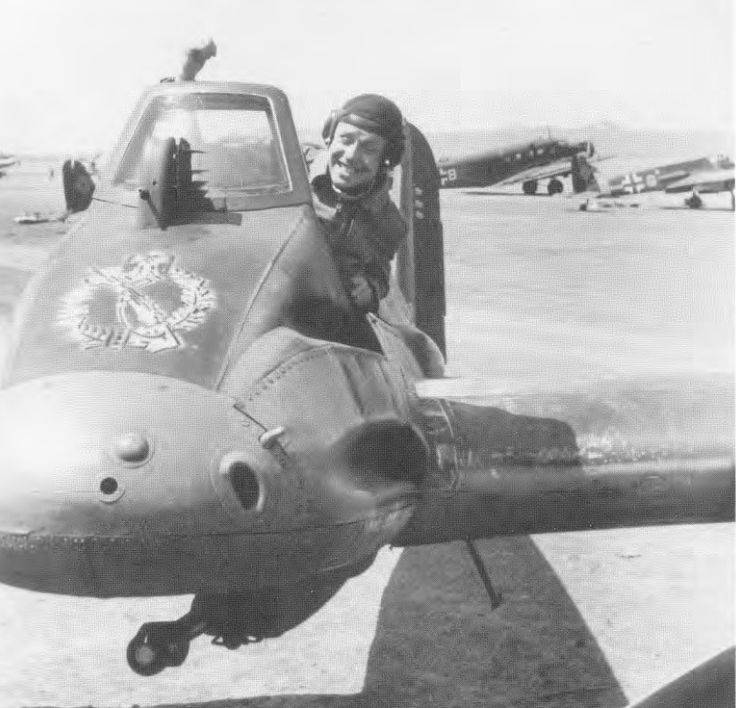
Was it, as “experts” of different levels try from time to time to present it, an airplane capable “in the event of mass release” to influence the course of the war?
Definitely not.
Everything, absolutely everything on this plane was badly done.
Engines are weak and unreliable. The hull is cramped, the pilot did not always have the opportunity to escape. The review is disgusting. The controls are heavy and imprecise. Armament is insufficient to solve the initially set tasks.
According to the memoirs of German pilots, the only thing they had no complaints about was the emergency box. There was a gas mask, a submachine gun and three magazines, two grenades, five chocolate bars, a flask of water, and a helmet.
And this is what some are trying to present as a "miracle weapon". In general, it remains to be regretted that the Germans did not rivet more of this. It would be easier.
LTH Hs.129b-2:
Wingspan, m: 14,20.
Length, m: 9,75.
Height, m: 3,25.
Wing area m: 28,90.
Weight, kg:
- empty aircraft: 3 810;
- normal take-off: 4;
- maximum take-off: 5 250.
Engine: 2 x Gnome-Rhone 14M x 700 hp
Maximum speed, km / h: 320.
Cruising speed, km / h: 265.
Practical range, km: 560.
Maximum rate of climb, m / min: 350.
Practical ceiling, m: 7 500.
Crew, person: 1.
Armament:
- two 7,92 mm MG.17 machine guns with 500 rounds per barrel;
- two 20-mm MG-151/20 cannons with 125 rounds per barrel.
Suspended:
- one 0 mm MK-101 cannon with 30 rounds or four 7,92 mm MG.17 machine guns with 250 rounds per barrel or 4 x 50 kg bombs, or 96 x 2 kg fragmentation bombs.
For Hs. 129b-2 / Wa - standard armament + one 30 mm MK-103 cannon or one 37 mm VK-3.7 cannon.
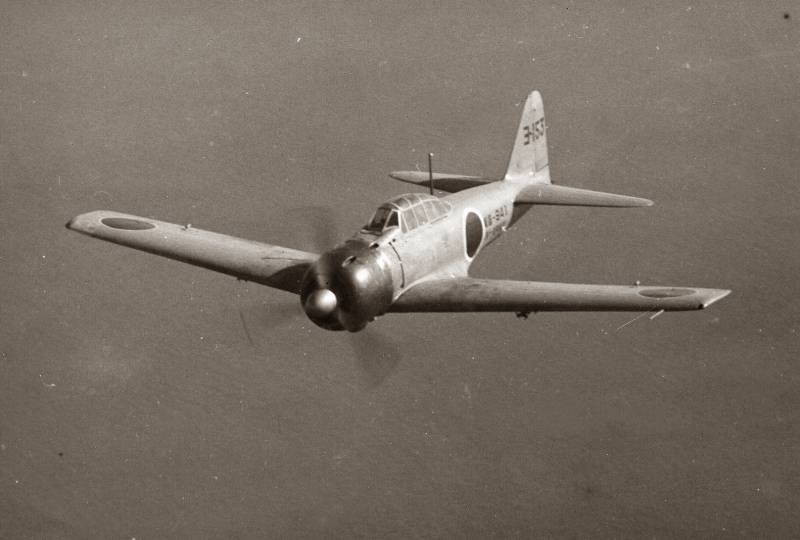
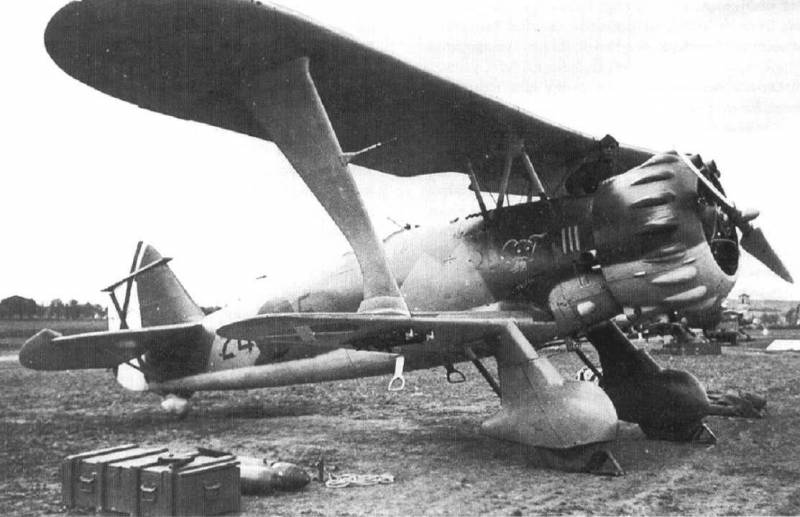
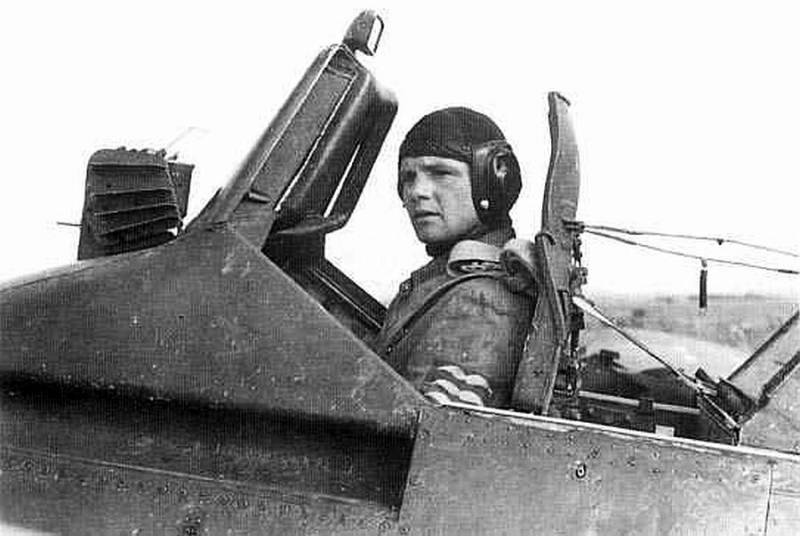
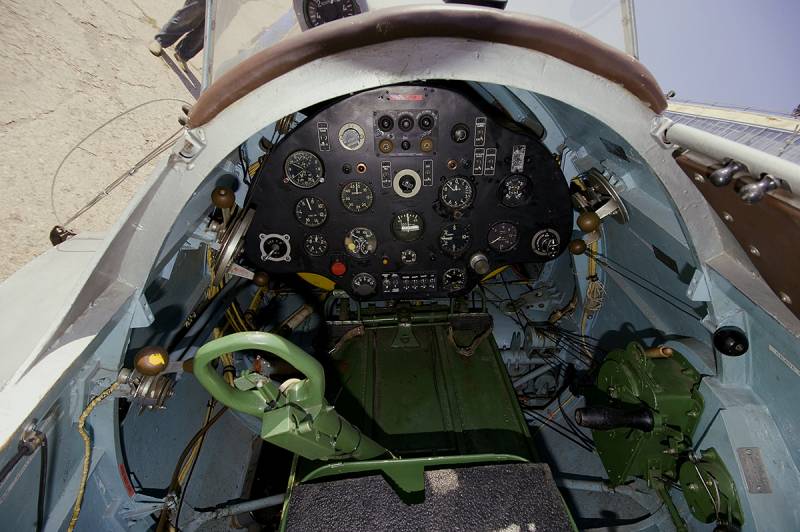
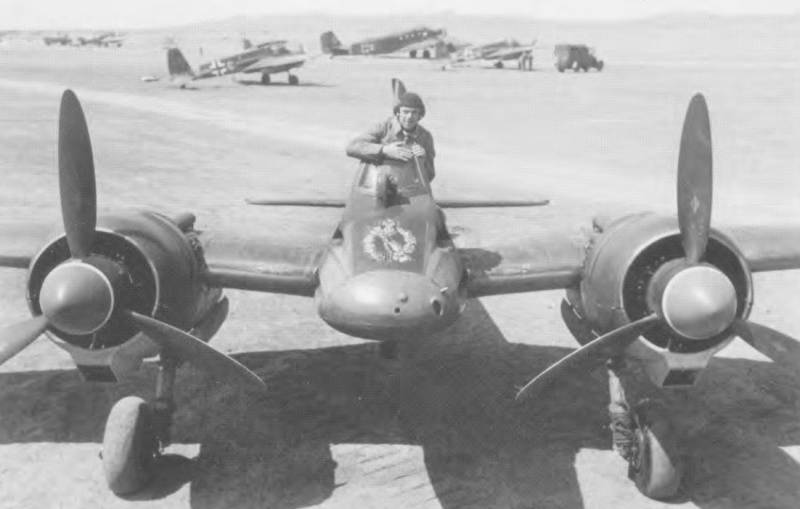
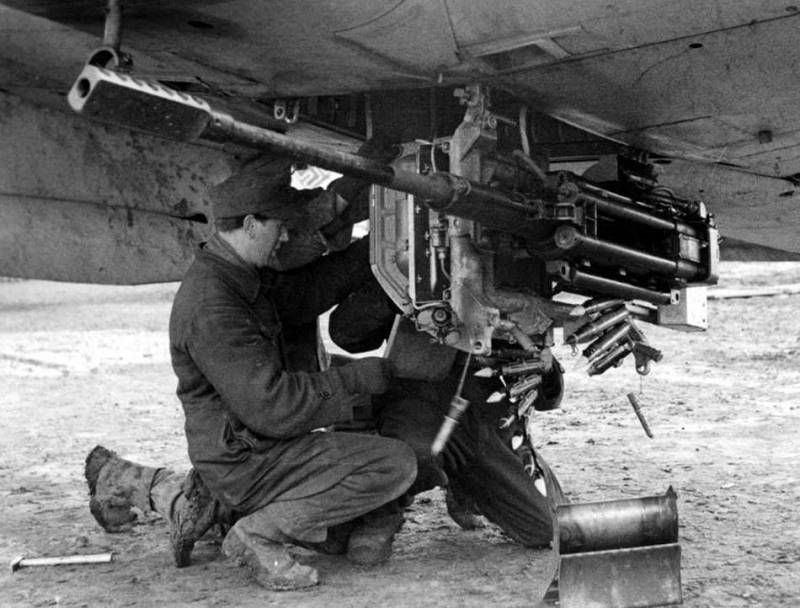
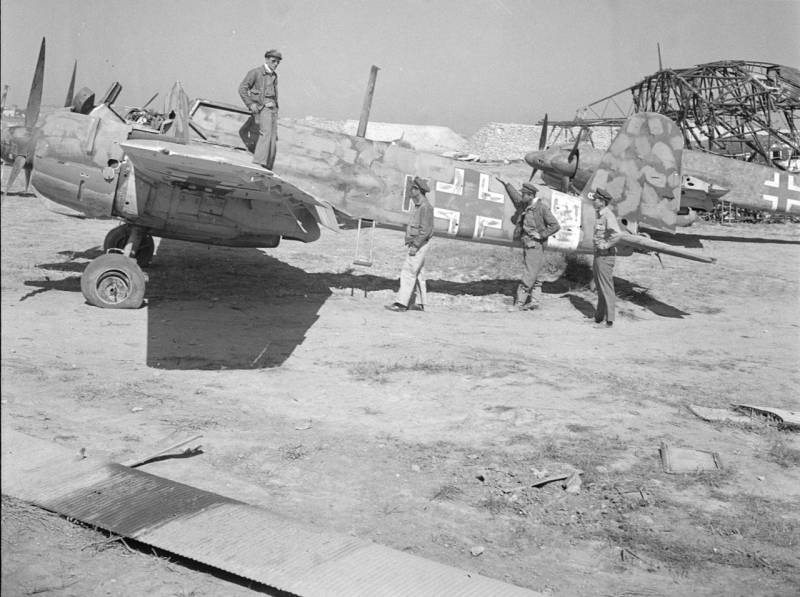
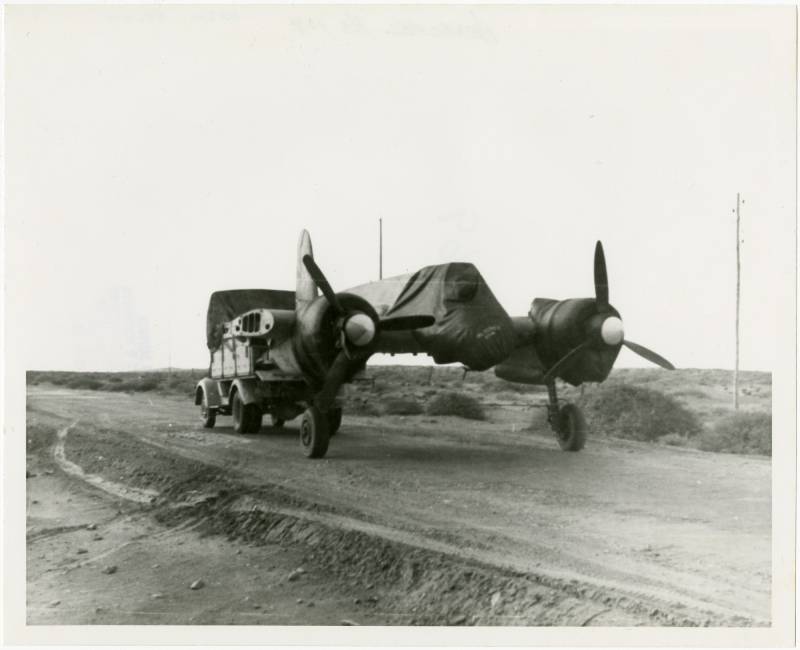
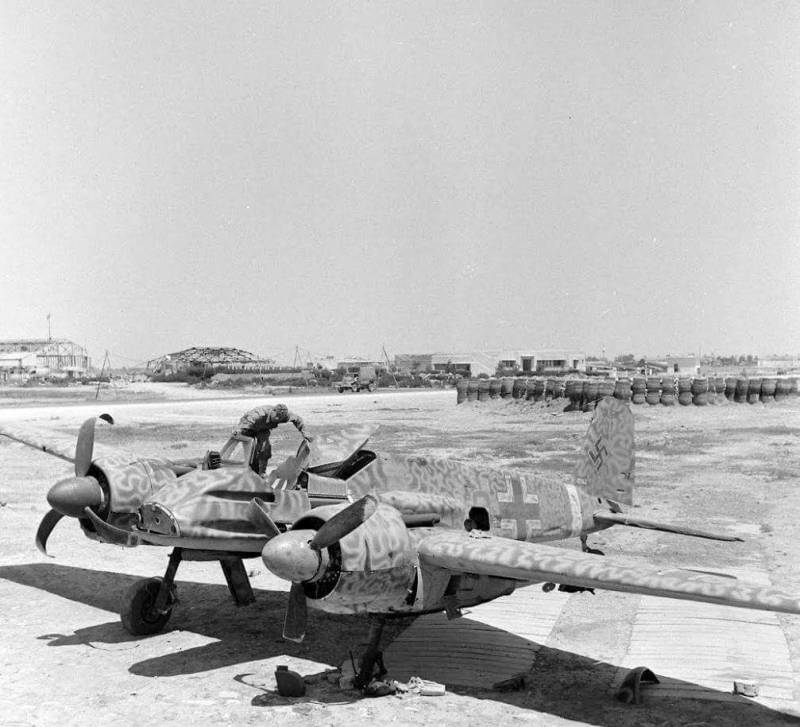
Information